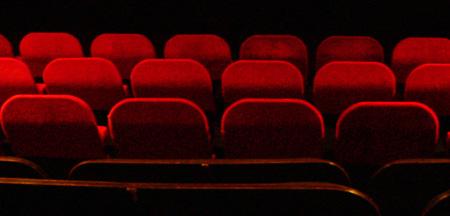"We have reached the goal without a single casualty," rejoices Steffen Andersen-Møller, head of Audience & promotion at the Danish Film Institute, at the current status of converting Danish cinemas to digital projection.
In Denmark, all of the 154 cinemas that are eligible for subsidies had been digitised at the end of 2012. A few individual screens still need to be converted, but work is in process, making Denmark one of the first countries in Europe to have a fully digitised cinema market.
"All cinemas have converted to digital and, remarkably, not a single one has closed in the process. Before the Film Institute set up our two digitisation subsidy schemes, a lot of people were concerned that as many as 70 cinemas would have to shut down," Andersen-Møller says.
Two subsidy schemes
After years of discussing formats and, crucially, who would be paying for the digitisation, the Ministry of Culture and the Danish Film Institute in 2010 agreed on two separate schemes to jumpstart the process.
One was a direct subsidy scheme for purchasing digital equipment, awarding approximately 27,000 euros to smaller cinemas in towns of less than 20,000 people or to cinemas with a more art house repertoire, on the condition that they come up with the rest of the financing, or roughly double the amount of the subsidy. Running from August 2011 to January 2012, the scheme paid a total of nearly three million euros to 109 cinemas.
The second subsidy scheme involves digital screenings. When a cinema has shown a Danish film on digital equipment at least 10 times, it qualifies for a payment of 335 euros. The scheme is running from 2012 to 2016, and each cinema can receive a maximum of nearly 27,000 euros via this indirect subsidy scheme.
Cinemas can only receive subsidies from one scheme or the other. While the direct subsidy scheme has been used to support small and medium-sized cinemas, the indirect subsidies benefit the big cinemas that financed their digital equipment themselves.
"The direct subsidy scheme is a culture subsidy scheme, ensuring easy access to cinema experiences for everyone and securing Danish cinema the unique advantage that all films can be shown anywhere in the country. The second scheme was devised for the purpose of accommodating the entirety of the cinema market," Andersen-Møller says.
Subsidy as catalyst
Considering the highly heterogeneous composition of the cinema market, with 20% of cinemas representing nearly 80% of admissions, it was necessary to offer some sort of state support to the many small cinemas dotting the country.
"Denmark traditionally has a very fine network of cinemas, which is also expressed in the Film Act and the current Film Agreement for a balanced cinema sector. If we had not gone in and supported conversion with state funds, the smaller cinemas would not have stood a chance to carry the burden of digitalisation," Andersen-Møller says.
Closures would have resulted in a market where 35mm prints would have been almost impossible to come by. While culture politicians and the Danish Film Institute were naturally aware of the digitalisation issue for years, they held back on offering financial support for a long time.
"We waited a relatively long time, to be sure about the format, but also to make sure that we were spending neither too little nor too much taxpayer money on this issue. As the result here in Denmark shows, it doesn't take massive amounts of money; a reasonable amount can act as a catalyst for further fundraising," Andersen-Møller says.
Digital equipment costs around 80,000 euros per cinema. The government subsidy typically constitutes 10-30%, while the rest is covered by municipal aid, grants from funds and private capital.
The European perspective
Denmark is among the first countries in Europe to have a fully digitised cinema market. Norway was first, and Luxembourg and Belgium have also fully converted, while big Western European countries like the UK and France are approaching 100%, says John Graham, General Secretary of the European Digital Cinema Forum. The forum was founded in 2001 to give Europe one voice to answer Hollywood in the digitalisation discussion and to gather and spread information about digital developments.
"It’s extraordinary that no Danish cinemas had to close in the process. That was the big concern about digitalisation, that a significant number of smaller cinemas would be forced to close because they couldn’t come up with the money. As it turned out, however, they could and the Danish model of using state funds to kickstart the process proved to work well," Graham says.
Of course, only time can tell what the long-term consequences of the digital cinema in Denmark market will be, but so far Denmark has seen a 40% rise in first-run prints from 2010 to 2012.
"Accessibility has been secured. The challenge now, as also planned, is to increase diversity in the range of films," Andersen-Møller says.
